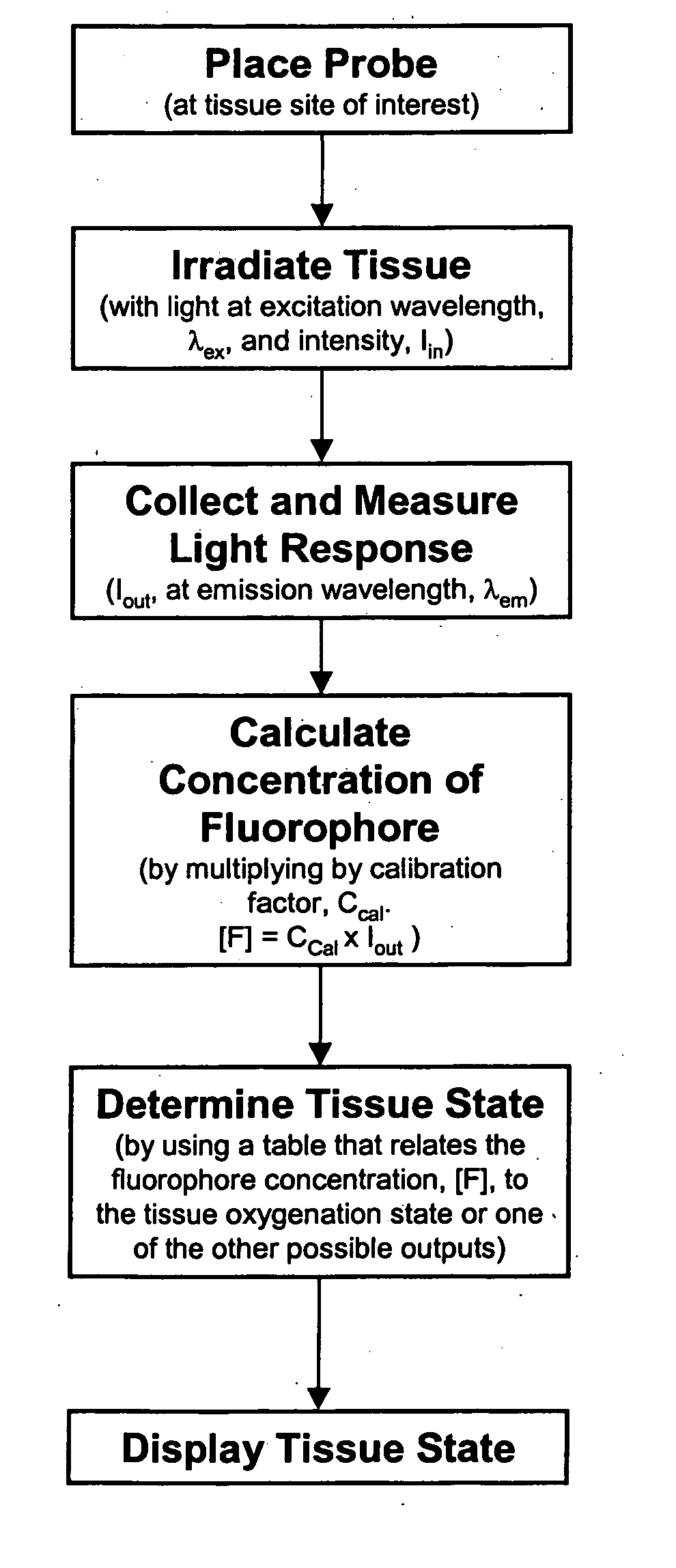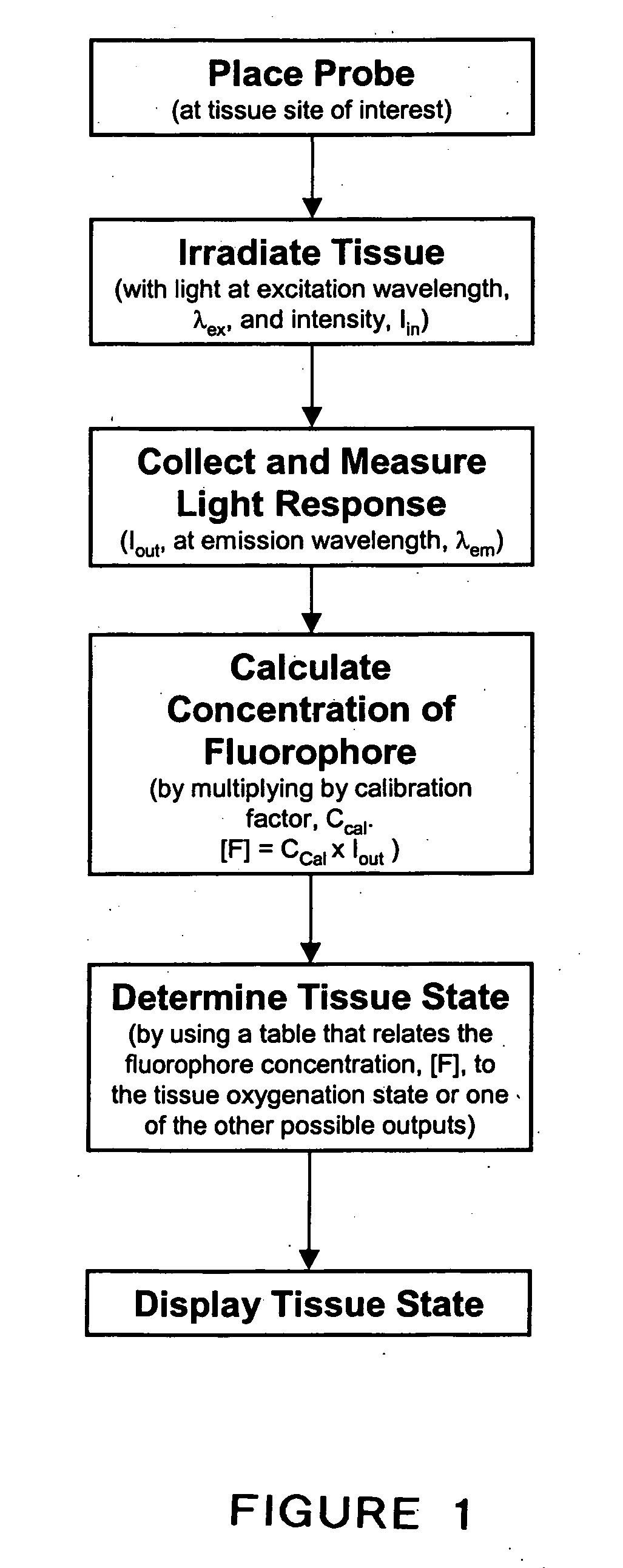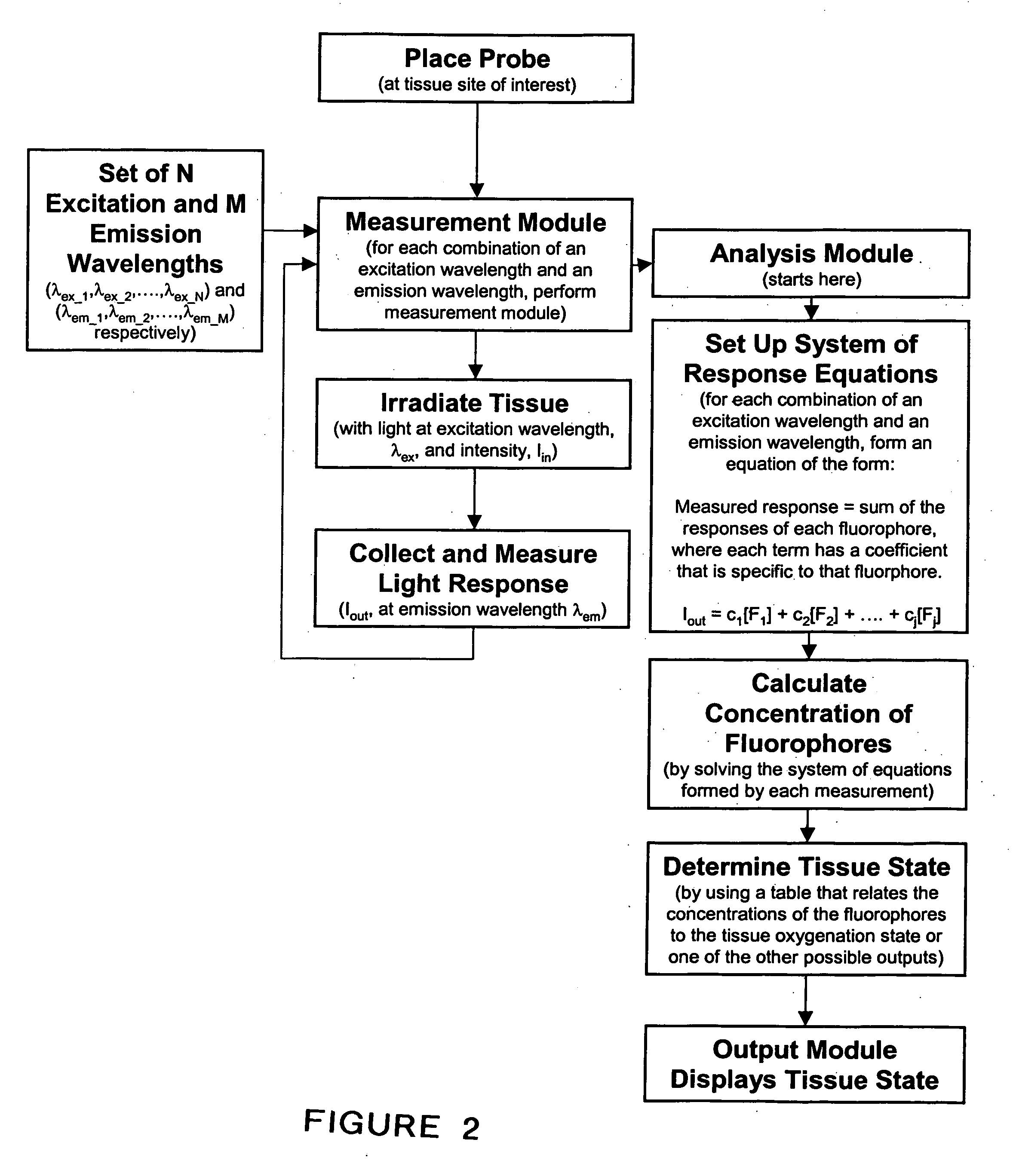System and method for monitoring of end organ oxygenation by measurement of in vivo cellular energy status
a technology of cellular energy and monitoring system, applied in the field of system and method, can solve the problems of insufficient oxygenation of end-organ tissues, most frequent cellular energy production, and particularly worrisome conditions
- Summary
- Abstract
- Description
- Claims
- Application Information
AI Technical Summary
Benefits of technology
Problems solved by technology
Method used
Image
Examples
example 1
[0045] There are clinical scenarios where tissue can become deprived of oxygen, i.e., hypoxic or anoxic, include but are not limited to, embolic or thrombotic blood vessel stenois or occlusion as in but not limited to, 1) myocardial ischemia, infaractiori, and stroke of the brain, 2) organ transplantation, 3) shock of all types (septic, cardiogenic, hypovolemic) 4) or any other type of organ failure. These situations often arise in the acute care setting such as in an ICU or surgical suite. In all of these situations where there can be a decrease in tissue oxygen perfusion there will be also be changes in the redox state of NAD(P), FAD, and other fluorophores that can be measured. Initially, NAD(P) and FAD shift toward their reduced forms but eventually can switch towards the oxidized state as the tissue dies. The absolute or relative measurements of these fluorphores is then be used to estimate the oxygen perfusion state of the tissue.
example 2
[0046] In the case of shock of any kind, but especially septic, there is often multiple organ failure occurring secondary to decreased perfusion of the end-organs with oxygenated blood. In this scenario, the probe 14 is inserted into a hollow organ, such as the bladder, stomach or rectum, so the end-organ tissue perfusion status is monitored.
[0047] In the case where monitoring from the rectum is desired, the probe will be sufficiently small (ideally 14 may have light gathering and delivery features such as a GRIN lens attached to its distal end. The probe 14 may also have mechanical and / or chemical adhesive features that promote its attachment and stable interface with intestinal mucosa. For example, the probe may use vacuum suction to attach to the intestinal mucosa. Alternatively, it may bend so as to wedge or lodge itself near the intestinal mucosa. The probe 14 is also be attached to a light conduit such as a bundle of one or more optical fibers, for the purpose of transmitting...
example 3
[0050] In the case of solid organ transplantation, maintaining sufficient end-organ oxygen perfusion to the transplanted organ is critical to the survival of the organ. Examples of relevant organ transplantations where monitoring of end-organ oxygen perfusion is beneficial, include but are not limited to the kidney, liver, heart, lung, intestines, limbs, fingers, cornea, and skin.
[0051] In the specific case of a kidney transplantation the probe 14 is small, ideally 14 attaches to the outer surface of the kidney either through a mechanical means such as a vacuum suction or hooks, or by a chemical adhesive. This attachment is easily reversible and the probe 14 can be removed with minimal to no additional surgery after monitoring is no longer needed. The probe 14 is also attached to a light conduit, such as a bundle of one or more optical fibers, for the purpose of transmitting light from the light source to the probe 14 and in turn transmitting light collected by the probe. 14 to the...
PUM
 Login to View More
Login to View More Abstract
Description
Claims
Application Information
 Login to View More
Login to View More - R&D
- Intellectual Property
- Life Sciences
- Materials
- Tech Scout
- Unparalleled Data Quality
- Higher Quality Content
- 60% Fewer Hallucinations
Browse by: Latest US Patents, China's latest patents, Technical Efficacy Thesaurus, Application Domain, Technology Topic, Popular Technical Reports.
© 2025 PatSnap. All rights reserved.Legal|Privacy policy|Modern Slavery Act Transparency Statement|Sitemap|About US| Contact US: help@patsnap.com



